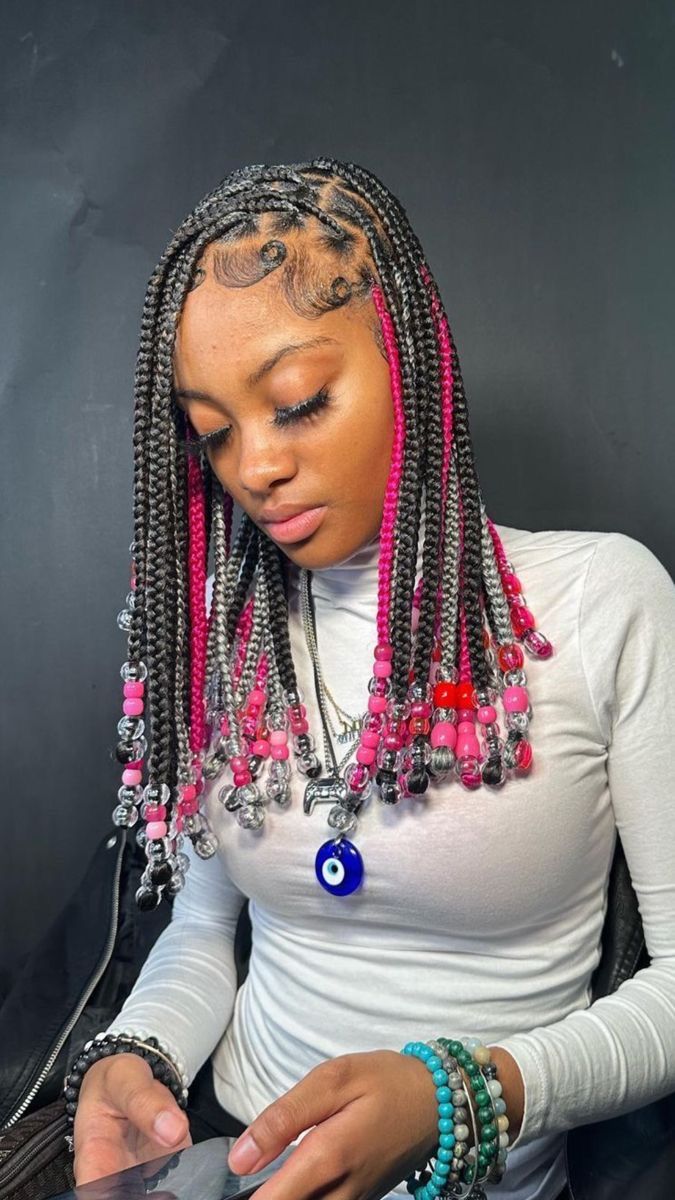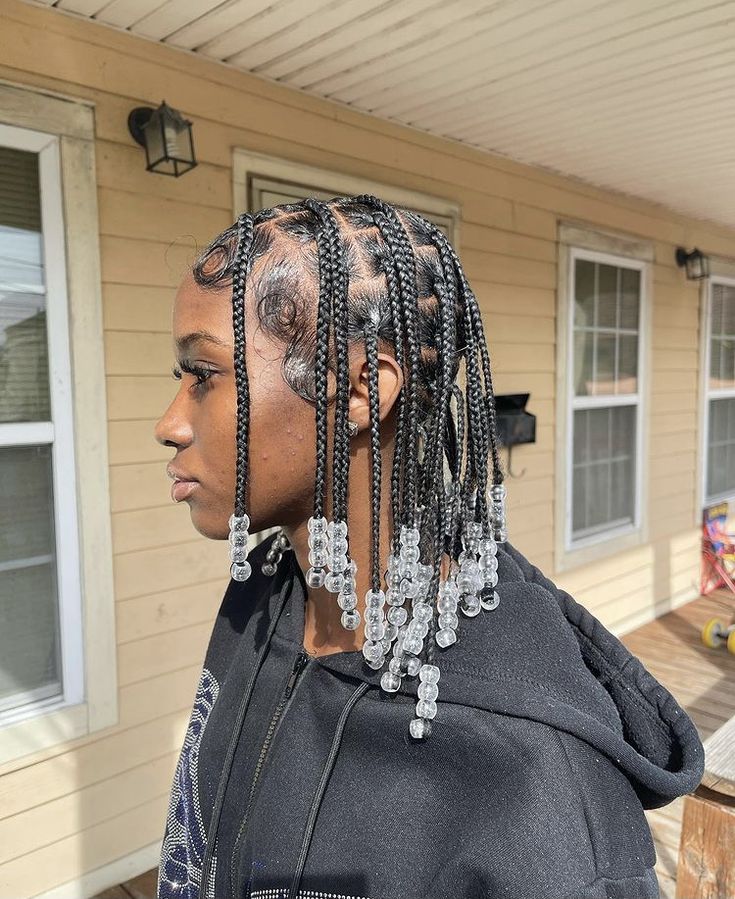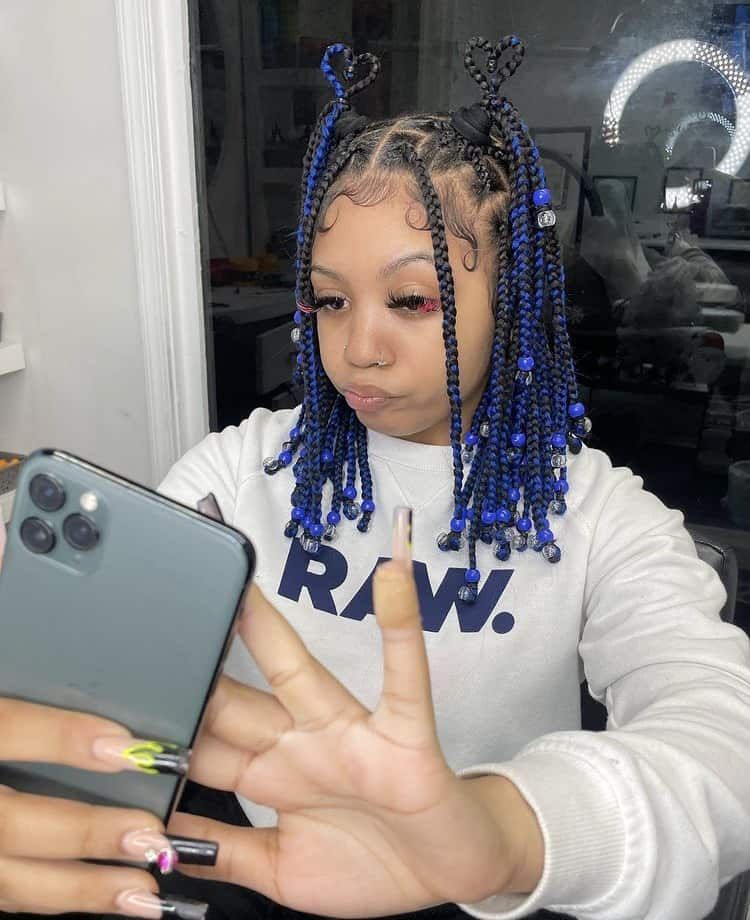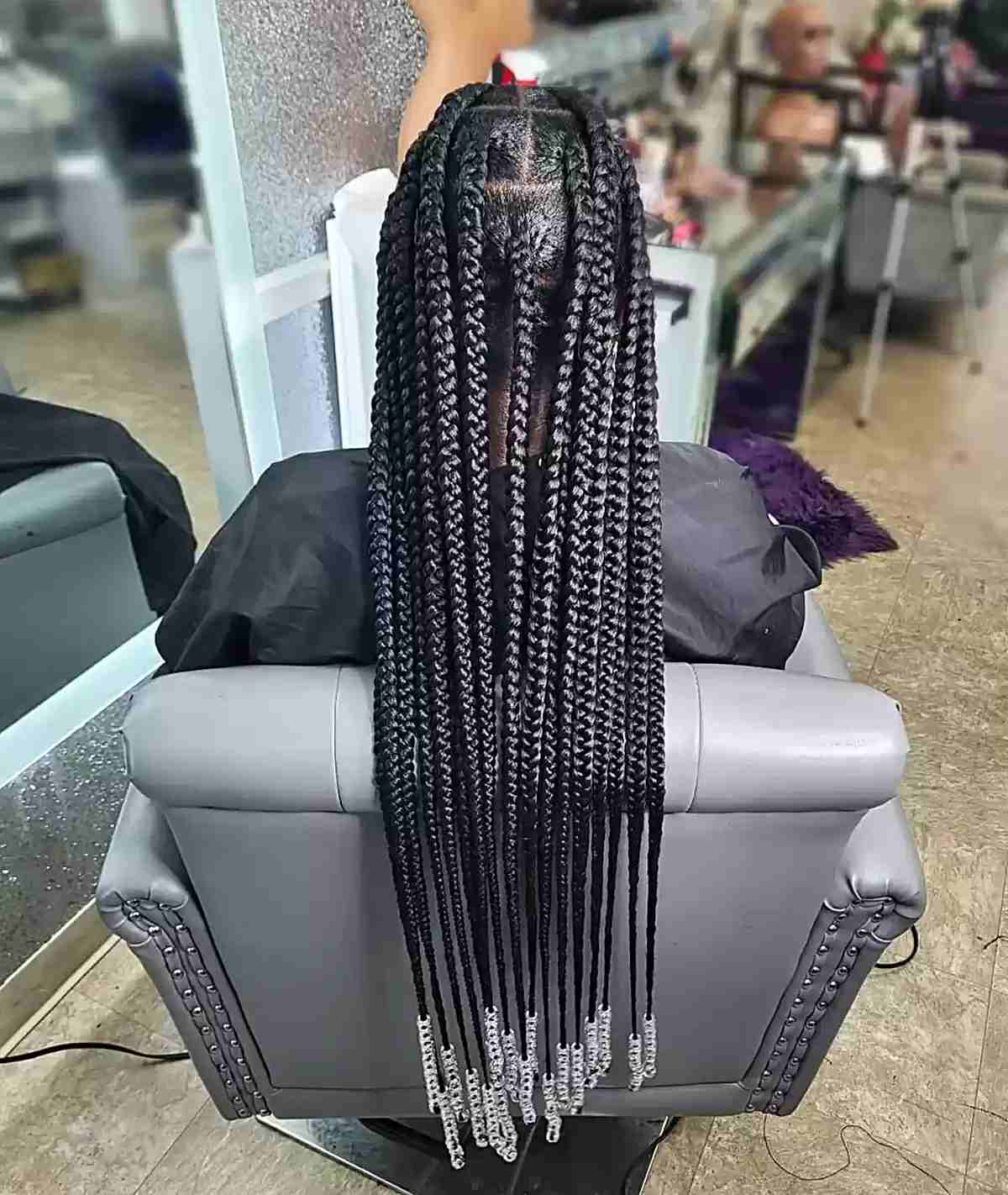I. Introduction
A. The Allure of Knotless Beadwork: Unveiling a World of Elegant Jewelry Designs
In the realm of jewelry making, few techniques capture the essence of elegance and simplicity quite like knotless beadwork. This captivating technique, characterized by its seamless construction and intricate patterns, has captivated beaders worldwide with its ability to transform humble beads into breathtaking creations.
The allure of knotless beadwork lies in its deceptive simplicity. Unlike traditional beading methods that rely on knots to secure beads, knotless beadwork employs a unique weaving technique that interlocks beads without the need for tying knots. This results in a smooth, continuous design that exudes a sense of refinement and sophistication.
The versatility of knotless beadwork further enhances its appeal. This technique can be used to create a wide variety of jewelry designs, from delicate earrings and pendants to bold necklaces and bracelets. The possibilities are endless, making knotless beadwork a favorite among beaders of all skill levels.

B. A Journey Through Time: Tracing the Origins of Knotless Beadwork
The origins of knotless beadwork can be traced back to ancient civilizations around the world. Evidence suggests that this technique was used by cultures in Africa, Asia, and the Americas to create decorative items and adornments. Over time, knotless beadwork evolved and adapted to different cultural and artistic expressions, showcasing the ingenuity and creativity of beadworkers throughout history.
In modern times, knotless beadwork has experienced a resurgence in popularity. As beaders seek out new and innovative techniques, knotless beadwork has emerged as a favorite for its elegance, versatility, and ease of use. Contemporary beaders are incorporating knotless beadwork into a wide range of jewelry designs, from traditional styles to modern interpretations.
C. Embracing Simplicity: The Significance of Knotless Beadwork in Modern Jewelry Design
The growing popularity of knotless beadwork in modern jewelry design can be attributed to several factors. Firstly, this technique aligns perfectly with the trend towards minimalist and elegant jewelry. The seamless construction and intricate patterns of knotless beadwork create a sophisticated look that complements a variety of styles.
Secondly, knotless beadwork offers a refreshing alternative to traditional beading methods that rely on knots. The absence of knots not only enhances the aesthetics of the jewelry but also increases its durability. Knotless beadwork pieces are less prone to unraveling or breaking, making them a more reliable choice for everyday wear.
Finally, knotless beadwork is relatively easy to learn, making it accessible to beaders of all skill levels. With a few basic techniques and a bit of practice, anyone can create beautiful and unique jewelry pieces using knotless beadwork.

II. Deconstructing the Art: Understanding the Essential Elements of Knotless Beadwork
A. The Foundation of Beauty: Exploring the Types of Beads Used in Knotless Beadwork
The beauty of knotless beadwork lies not only in the technique itself but also in the diverse range of beads that can be used. Beaders can choose from a vast array of materials, including glass, metal, gemstone, and seed beads, each offering its unique characteristics and aesthetic appeal.
Glass beads, with their versatility and affordability, are a popular choice for knotless beadwork. They come in a wide range of colors, shapes, and sizes, allowing beaders to create a variety of designs. Metal beads, such as gold, silver, and copper, add a touch of elegance and sophistication to knotless beadwork pieces. Gemstone beads, with their natural beauty and preciousness, can elevate knotless beadwork to a higher level of luxury. Seed beads, with their tiny size and uniform shape, are ideal for creating intricate patterns and details.
When selecting beads for knotless beadwork, it’s essential to consider the overall design and color scheme. The size and shape of the beads should be chosen in proportion to the desired pattern, while the colors should complement each other and the wearer’s personal style.
B. The Essential Tools: Gathering the Necessary Supplies for Knotless Beadwork
To embark on a knotless beadwork journey, it’s crucial to gather the necessary tools and supplies. These tools will ensure a smooth and enjoyable beading experience, preventing frustration and enhancing the quality of the final product.
Needle-nose pliers are an essential tool for knotless beadwork. They are used to open and close crimp beads, attach clasps, and manipulate beads with precision. Crimping pliers are specifically designed for securely crimping crimp beads, ensuring a durable closure for the jewelry piece. Beading needles, with their fine tips and long eyeholes, are used to thread beads and create the intricate patterns of knotless beadwork.
In addition to these essential tools, beaders may also find it helpful to have a bead board or work mat to protect their work surface, a pair of scissors for cutting thread, and a magnifying glass for working with particularly small beads. Choosing high-quality beading thread is also important. Nylon, silk, or FireLine threads are popular choices due to their strength, flexibility, and resistance to abrasion. The thickness of the thread should be chosen based on the size and weight of the beads being used.

C. Mastering the Technique: Learning the Basic Steps of Knotless Beadwork
The foundation of knotless beadwork lies in a technique called right-angle weave (RAW). This technique involves weaving beads together at a 90-degree angle, creating a sturdy and seamless structure. While RAW may appear complex at first glance, it can be broken down into a few basic steps that are relatively easy to learn.
Understanding how to properly pick up and add beads to the working thread is crucial for mastering RAW. The beader uses the needle to pick up a bead, then passes the needle through another bead that is already on the thread, creating a right-angle connection. This process is repeated to create rows and columns of beads, forming the desired pattern.
Once the basic principles of RAW are mastered, beaders can explore a variety of variations to create different textures and effects. For instance, peyote stitch, a variation of RAW, involves weaving beads in a circular pattern, forming a continuous tube. Brick stitch, another variation, creates a staggered brick-like pattern that is perfect for geometric designs.
III. Embarking on the Creative Journey: A Step-by-Step Guide to Creating Knotless Beadwork
A. Gathering the Essentials: Assembling the Necessary Materials for Your Project
Before diving into the creative process, it’s important to assemble all the necessary materials for your knotless beadwork project. This includes:
- Beads: Choose the type, size, shape, and color of beads based on your design and preferences.
- Beading thread: Select the appropriate thread thickness and color based on the weight of the beads and your desired aesthetic.
- Beading needle: Select a needle size with a fine tip and a long eyehole to accommodate your chosen thread and beads.
- Needle-nose pliers: These will be used for opening and closing crimp beads and clasps.
- Crimping pliers: Ensure secure crimping for a durable closure.
- Scissors: Cut the beading thread to the desired length.
- Clasp or findings: Choose a clasp or other findings to complete your jewelry piece (optional).

B. Preparing the Working Thread: Setting the Stage for Beading Success
With all the materials gathered, it’s time to prepare the working thread. Measure and cut the thread to a length that is approximately three times the length of your desired finished piece. This allows for ample thread to complete the weaving and secure the ends.
Next, thread a crimp bead onto the needle, followed by a clasp (if using) or a few spacer beads. The spacer beads will create a space between the clasp and the beadwork for a more finished look. Crimp the crimp bead to secure the thread to the clasp or spacer beads.
C. Creating the Beadwork: Stitching Your Way to a Masterpiece
Now comes the exciting part – creating the beadwork itself! Follow your chosen beading pattern, carefully adding beads to the working thread using the right-angle weave technique. It’s crucial to maintain consistent tension in the thread throughout the process. This ensures a neat and secure weave that will prevent the beads from becoming loose or the design from distorting.
As you progress through the pattern, pay close attention to the order and placement of beads. Many knotless beadwork patterns use bead charts or diagrams to visually represent the design. These charts depict the arrangement of beads in each row, making it easier to follow the pattern and achieve an accurate result.

D. Finishing Touches: Adding Embellishments and Securing the Design
Once the beadwork is complete, it’s time to add any finishing touches and secure the design. Depending on your project, you may choose to incorporate charms, pendants, or other embellishments. These elements can add a personal touch and enhance the overall aesthetic of your jewelry piece.
Finally, secure the end of the beadwork by weaving the thread back through a few rows of beads to create a hidden knot. Trim the excess thread and use the needle-nose pliers to crimp a final crimp bead to permanently secure the thread end. This ensures that your jewelry piece is strong and durable.